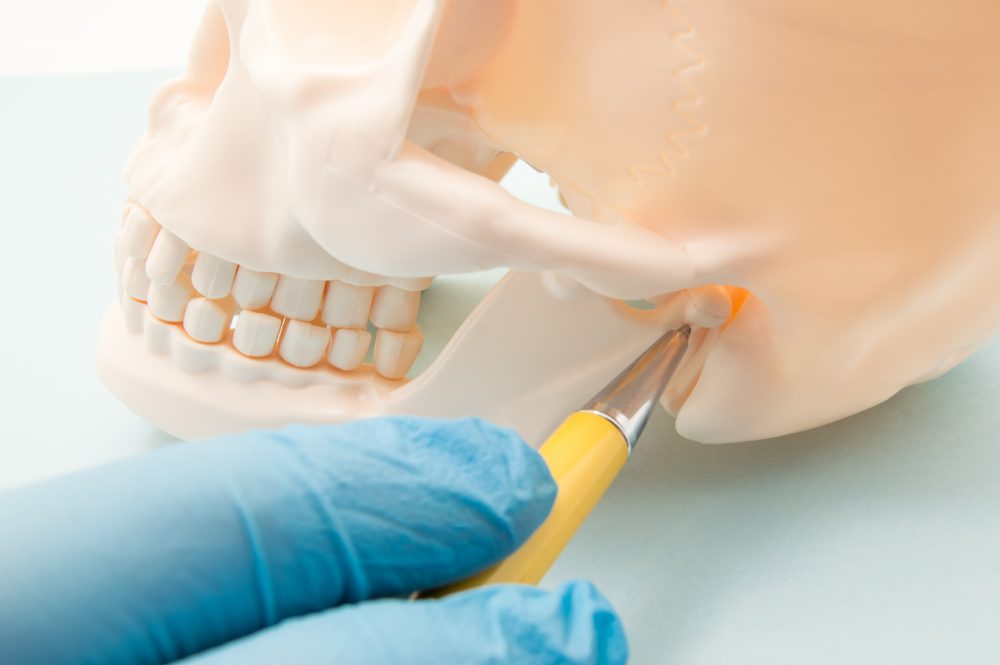Pain where the jaw hinges to the skull is both common and difficult to treat. Killing off aged cells might be the secret to healing it, UConn researchers report in the June issue of Aging Cell.
Temporomandibular jaw (TMJ) problems cause clicking and locking of the jaw, difficulty chewing, and generally makes eating miserable. It affects many people intermittently throughout life, and tends to get worse as we age: between 45-70% of people older than 65 show signs of TMJ deterioration, according to previous research in the field. Although massage, physical therapy, and other interventions can sometimes help, no drug is currently available to alleviate or prevent deterioration of the joint.
Age worsens joint deterioration in many parts of the body. Scientists aren’t sure why, but in many cases this deterioration seems related to old, damaged cells that refuse to die. Normally, cells in our body are constantly renewing themselves. Most cells that get damaged or begin to turn cancerous are removed by our immune system to make way for fresh, young, healthy cells.
But sometimes these cells stick around. Called senescent cells, they are somehow resistant to the normal ways the body rids itself of damaged cells.
“Nobody knows why they accumulate, but they do,” says Ming Xu, a gerontologist and geneticist in UConn Health School of Medicine’s Center on Aging. And senescent cells don’t just accumulate. They seem to actively promote inflammation and damage to surrounding cells.
Xu and colleagues Yueying Zhou at the Center on Aging and Xiangya Stomatological Hospital, and Sumit Yadav in UConn School of Dental Medicine’s Department of Orthodontics study senescent cells, and have been developing medicines called senolytics to clear them away. In this study, they found that treating mice with a combination of two senolytics removed senescent cells in the jaw joints of old mice.
They combined Dasatinib, a senolytic that removes senescent cells from connective tissue like cartilage and bones, and Quercetin, which goes after senescent cells in blood vessels and skin. The combination is necessary because joints are complex structures made of many different types of tissue.
The researchers gave 24-month-old mice (equivalent to 70 to 80-year-old humans) a combination of Dasatinib and Quercetin three times every two weeks for six weeks. After the treatments, the cells in the jaw joints of the old mice looked more like the cells in the jaw joints of 4-month-old mice (equivalent to 15 to 20-year-old humans) than those of their fellow oldsters. The cartilage was thicker and the bone smoother, making the joints look like those of much younger animals. No other treatment known at this time can thicken cartilage in joints.
Another study recently published by Xu’s team in NPJ Regenerative Medicine shows that treating aged stem cells in a petri dish with the Dasatinib-Quercetin combination rejuvenated them.
Taken together, the results suggest the combination is worth trying out in humans. Like any potential new treatment, rigorous large-scale clinical trials must be done before the drugs can be safely used.
With this work “we are trying to slow down the whole aging process, to make 80-year-old people look like 50-year-olds,” Xu says.
This research was funded by the Glenn Foundation for Medical Research and AFAR Grant for Junior Faculty, the National Institutes of Health National Institute on Aging and the National Institute of Dental and Craniofacial Research.



